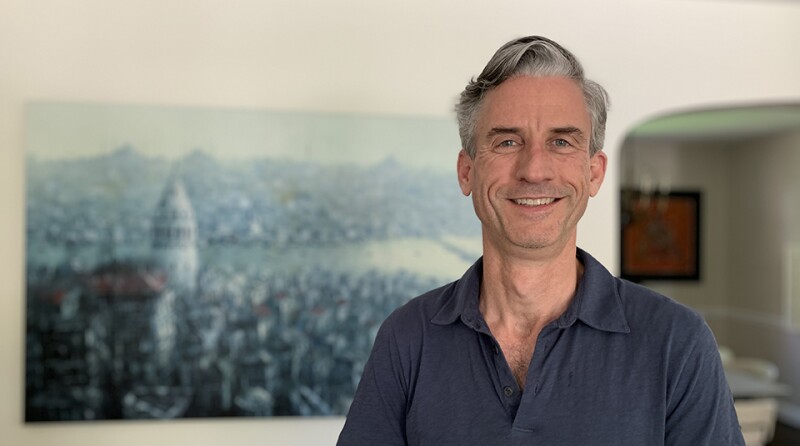
The new head of the IFC for Latin America and the Caribbean (LAC) aims to strengthen the cooperation and coordination of development finance institutions (DFIs) operating in the region as it prioritises projects that fight climate change.
“Working with IDB Invest and partnerships with the smaller regional [development] banks in the region, as well as with our sister organisation the World Bank will be super important, and that is all work in progress,” says Martin Spicer, the IFC’s director for LAC, a US national who has 25 years’ experience with the IFC and was most recently the IFC’s director of blended finance.
“I am having conversations to work out where we can do more together,” says Spicer. “We will need to work together to reduce regulatory bottlenecks by applying conditionality, where necessary, to open up investment into sectors, and also working together to identify investible projects and be together to finance them.”
Spicer adds that the challenge to alleviate the impact of climate change and limit global warming has been complicated by the pandemic, which the World Bank estimates caused a decline in regional GDP of 7.9% in 2020 – far deeper than Latin America suffered during the recessions of 2008 and the 1980s.
In 2020, 40% of the IFC’s funding into the region was linked to its climate change agenda – for both mitigation and funding projects – which accounted for $2.9 billion.
However, the total volume of disbursements from the IFC fell last year as the pandemic caused project delays and led private-sector companies to postpone or scrap some projects.
Spicer says lower investment in 2020 was largely caused by governments redeploying their own resources to combat the pandemic, which lowered the resources available for the public portion of public-private partnerships, and “is not reflective of our ambition”.
Debt funding
He adds that lower investments into PPPs was to some extent offset by higher disbursements through local financial institutions; that money mainly went to support companies that needed fresh finance for working capital needs.
Spicer also agrees that the increasing indebtedness of governments across the region has created an issue of appetite for additional debt funding – even on the favourable terms provided by the IFC.
“Because of the higher debt loads there is less fiscal space for governments to do their own investments, but this presents an opportunity for other private-public partnerships – particularly in the area of climate change and renewable energy,” says Spicer.
If you look across LAC there is more and more demand for green and sustainability deals from insurance and pension funds and individual investors who want to be investing for good
He adds that the IFC has traditionally preferred to extend debt financing for projects direct to the sponsor company but, in recent years, has also been active in developing local capital markets through supporting local banks’ development of green and sustainability-linked bonds.
The IFC has played central roles in such inaugural bonds for banks throughout Latin America, including Argentina’s Banco Galicia, Colombia’s Davivienda and Bancolombia and Ecuador’s Banco Pichincha.
“Total issuance of green and sustainable bonds in the region reached $19 billion in 2020, or 14% of all new bonds,” says Spicer. “Of that $19 billion, 64% was sovereign, which is not an area for IFC, which illustrates the potential scope for growth of private-sector deals.
"If you look across LAC there is more and more demand for these types of deals from insurance and pension funds and individual investors who want to be investing for good. The demand side is growing, and we are working to help match this with growth on the supply side.”
Step back
Spicer says the IFC has been working with private banks to help structure these deals and has also been a central investor in these inaugural bonds. He expects that the IFC will step back from being an active participant in subsequent deals once the structure has been validated in the market – and he doesn’t see a strong business case for providing IFC guarantees for these transactions.
“These deals have shown that green bonds can achieve funding at attractive rates without credit enhancement from the IFC,” he says. “The IFC should have a catalytic role by being part of the first issuance. However, there is also a lot of political volatility in the region and there is also a countercyclical role that we can play to help pricing for deals when others are shying away.”
Spicer adds that helping the development of green finance in Latin America’s local capital markets will also help sponsors of such deals recycle capital to local investors after construction and “project de-risking” to free up sponsors to direct capital towards fresh projects.
He says that Latin America and the Caribbean region already has a good climate change record, but much needs to be done.
“The region emits about 8.3% of the world’s GHGs [greenhouse gases], which is much lower on a percentage basis [for] its economy or population,” he says. “But to remain competitive and withstand the impact of climate change, it needs to make potentially trillions of dollars of investment across renewable energy and transportation and improve the climate performance of its land use and food production. And that’s what IFC needs to help to achieve if we want to live up to our development mandate.”
